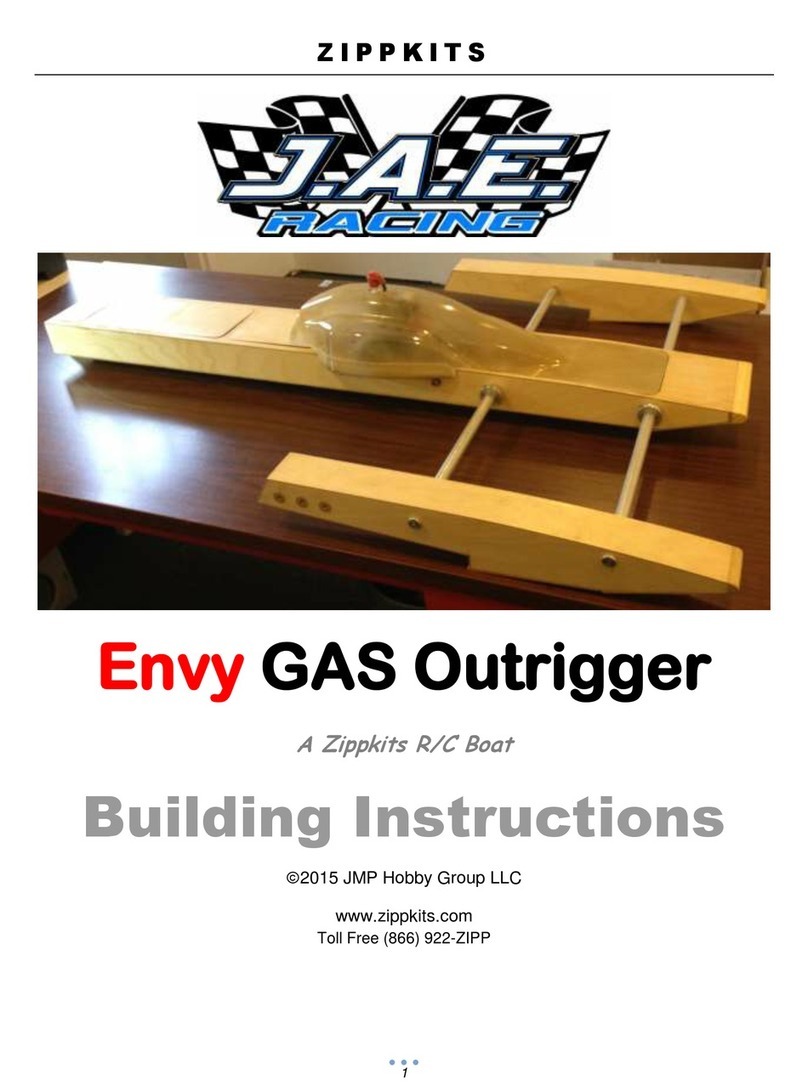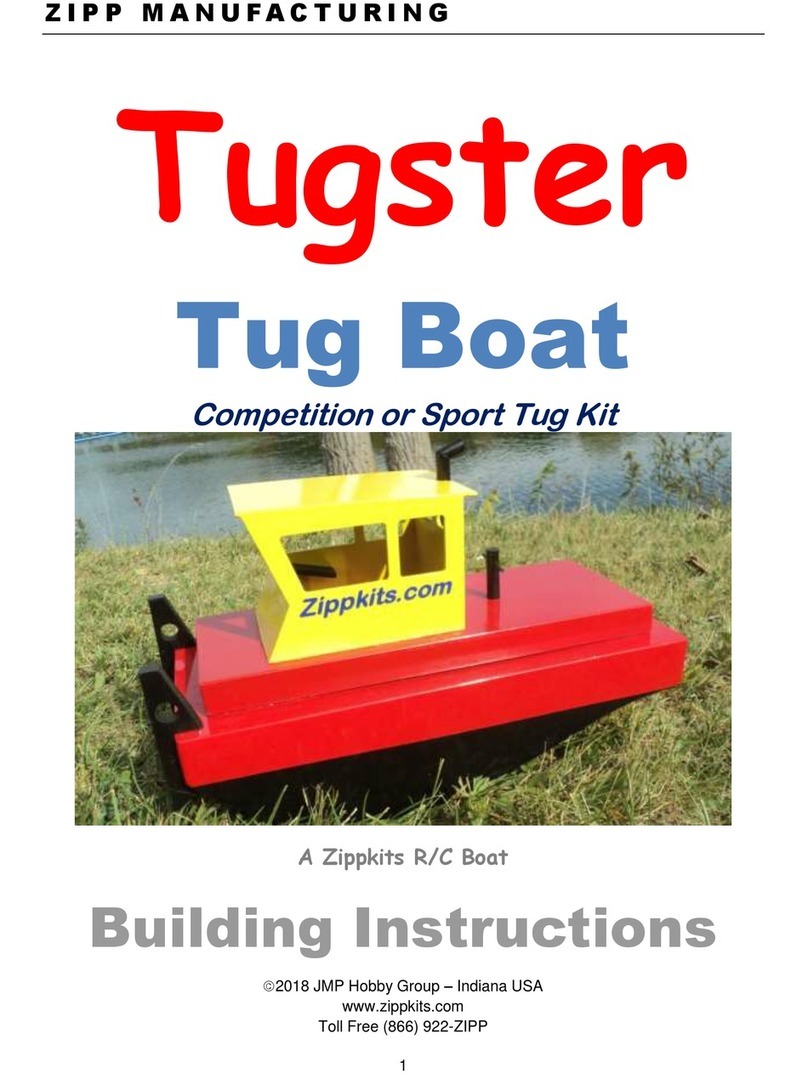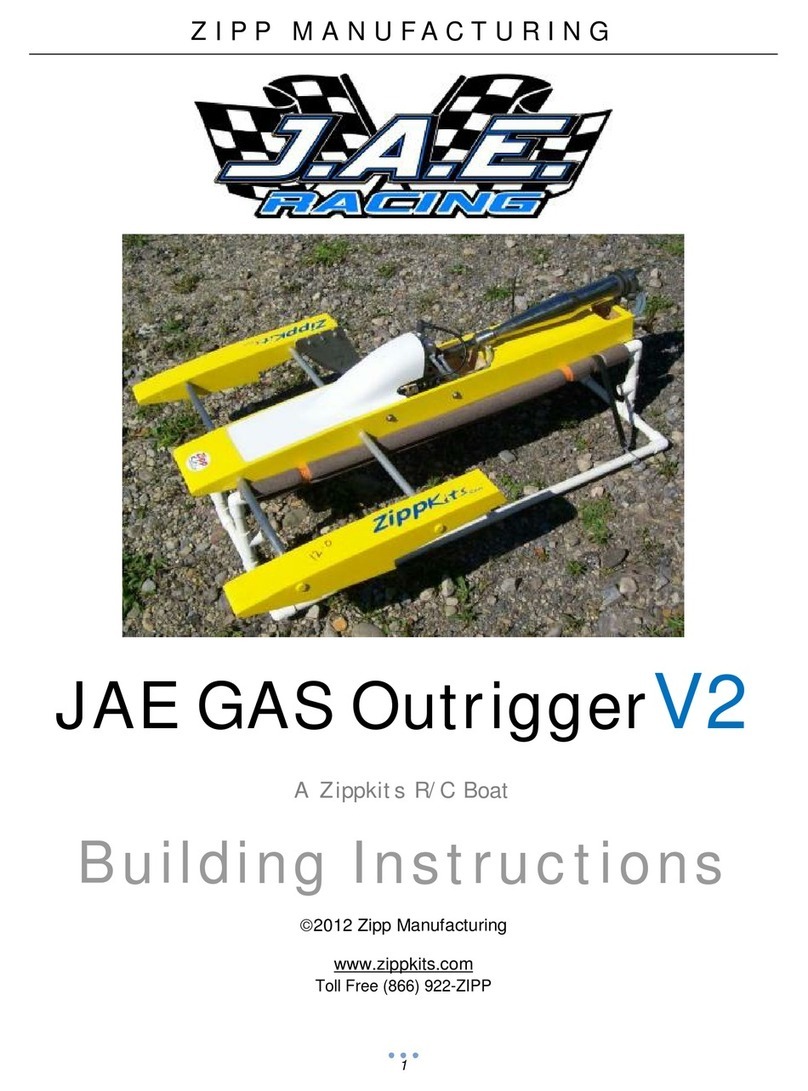Find the two ¼ ply engine rails. Sand them
smooth with 80.
Clamp a piece of wood to the back of BH 5 for
the next few steps, to keep it flat.
Check the fit of the engine rails into bulkheads
3, 4 and 5.
One engine rail has a relief for the carb. This
goes on your left side (right side when the boat
is upright).
If ok, glue them in (the big end goes forward).
Use 30 minute epoxy for the engine rails.
Be sure that bulkheads 4 and 5 are square.
The keel should be dry by now.
Check the fit of the keel into bulkheads 1, 2 and
3.
If ok, glue it in, making sure the keel is centered
on bulkhead 1. Use a square to be sure that the
keel is in the center of bulkhead 1.
Also be sure that the keel is flush with the top of
bulkhead 1.
This kind of looks like a boat, doesn’t it?
Take a break, and give the glue a little while to
completely cure.
Next, we will install the chines. Make sure you
follow along closely, as these are very important
to the final shape.
Using CA, glue one of the deck (closest to the
bench, remember the boat is upside down)
chines to the notch in bulkhead 5.
































